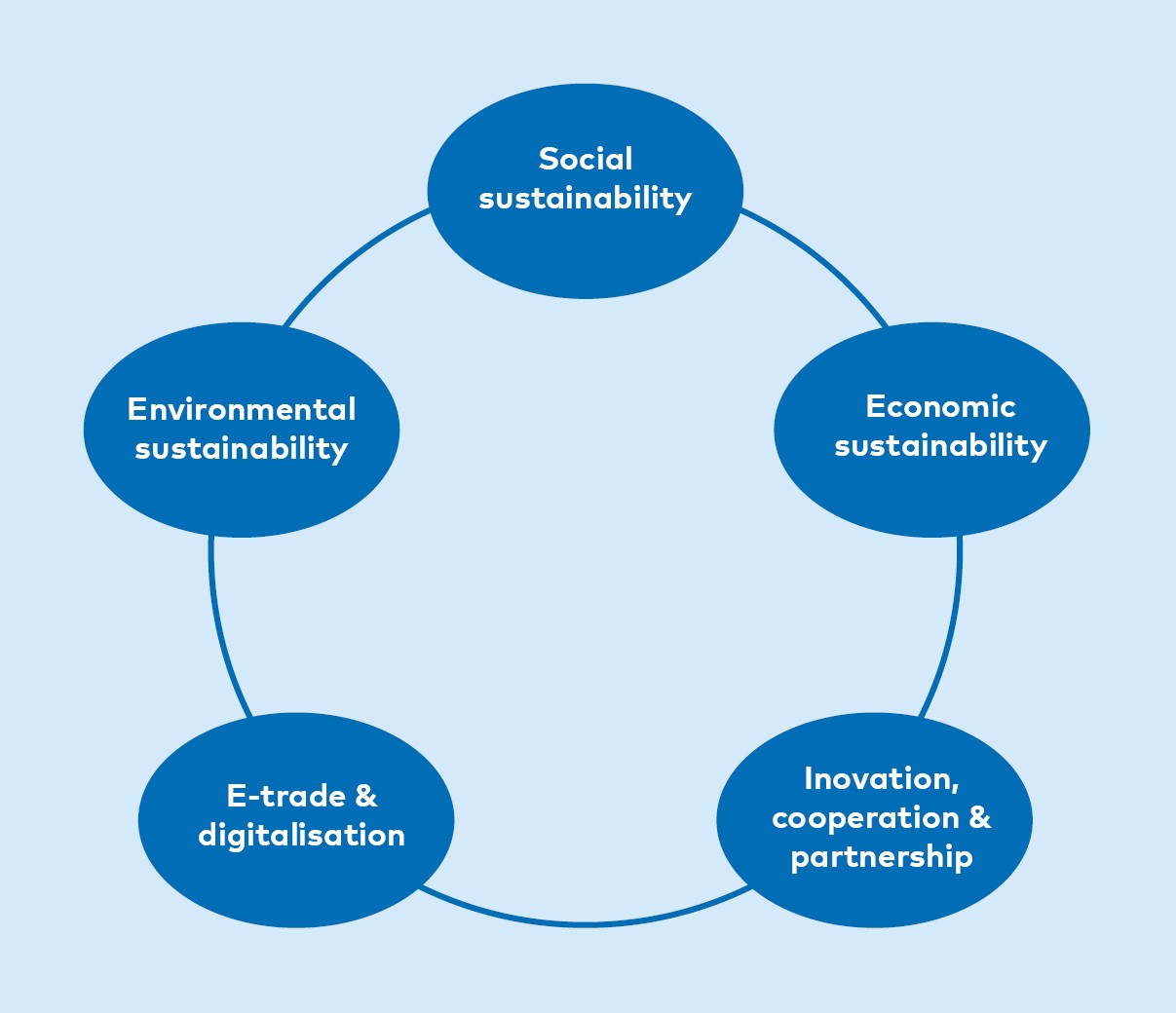
Good Nordic practices
Why Gladsaxe and Vantaa?
For several years, these two municipalities have worked strategically with linking the SDGs and public procurement, and both have been highlighted as good examples of how public procurement is used as a practical tool to act on the sustainability goals in the Nordic Region. Gladsaxe and Vantaa also demonstrate the ability to use procurement in ways that are supporting the needs of their citizens and users, but also as a political tool to progressively act on climate issues, environmental mitigation, and costs and quality without compromising social sustainability in the way public goods and services are purchased.
Gladsaxe
- Holistic consideration of SDGs. Gladsaxe was one of the first municipalities in Denmark to consider the SDGs holistically in local operations. To make sustainable public procurement more concrete, Gladsaxe outlined its priorities in their local strategy (2018-2022) and procurement policy (2020). In these steering documents, procurement is considered a key instrument to achieve the municipality’s goals and local SDG targets.
- Connection between sustainability and public procurement via five strategic focus points. Gladsaxe identifies five strategic focus points to specify what is meant by working with the SDGs in public procurement and to guide how the municipality purchases its goods and services (Figure 1). Through procurement, the municipality seeks to reach environmental, social, and economic sustainability, as well as to address innovation, cooperation, e-trade, and digitalisation. For each of these strategic points, specific targets have been identified to make action concrete. Targets for environmentally sustainable procurements, for instance, include at least 80% organically sourced food products in all schools in 2022, and by 2025, the 80% should apply to the entire municipality’s food products.

Figure 1. Five strategic focus points in procurement policy, developed in 2019 (Gladsaxe Municipality)
- Sustainable and circular construction and renovation. Gladsaxe has focused on making construction practices more sustainable and increasingly circular. For example, one of the goals is to strive for Nordic Ecolabel certification for childcare centres, improving healthier indoor environments for both children and staff where the exposure to chemicals are minimised and the building is more energy efficient. Moreover, when demolishing old buildings, the materials are reused as much as possible. This was seen in a new kindergarten, where 60,000 tons of building material were reused.
- Social sustainability enhancement through procurement. To strengthen the social quality of its citizens, Gladsaxe places demands and criteria on suppliers for jobs or collaborations that support vulnerable groups to effectively enter and remain in the local labour market. This way, public procurement is also directly targeting social sustainability objectives.
- Collaboration with other public procurers. Gladsaxe municipality participates in the Danish national partnership for green public procurement called POGI (Partnerskab for Offentlige Grønne Indkøb). Together, the members of this partnership, including Gladsaxe, set sustainability criteria and specifications so that suppliers receive a collective request for goods and services. This unified approach helps synergise the push for local and regional sustainability targets and mobilise consumer power to influence markets and production, while efficiently exchanging knowledge and experiences.
Vantaa
- Roadmap to “resource wisdom.” In Vantaa, public procurement has long been recognised as more than just a bidding process. With more than half of the city’s budget spent on procurement, Vantaa’s strategic priorities include reaching carbon neutrality, circular economy, innovation, and human and labour rights in procurement processes.
- Evaluation of sustainability in procurement. Vantaa has developed a model for evaluating sustainability aspects in public procurements. The evaluation is performed by the Procurement Service Unit, a team of procurement professionals, lawyers, and accountability experts who assess the requirements for and risks of each tender. For example, the team can require the supplier to use resources more efficiently, impose restrictions on the use of hazardous chemicals, and enforce labour rights, in addition to arranging a market dialogue or increasing the monitoring of contract implementation.
- Use of a sustainability check-list form. This web-based tool identifies possible purchases and tenders processed through a certain ’lane’ to the decision-makers in Vantaa. If the idea is supported, it proceeds as a project and then goes to the Procurement Service Unit for evaluation.
- Engagement with citizens in procurement decisions through participatory activities. Local surveys have shown that citizens hold high expectations when it comes to the city’s procurement targets and sustainable product information. Vantaa uses another web-based tool to enable citizens to suggest ideas of possible public purchases.
- It takes resources to reduce resources. Like many cities, Vantaa faces the challenge of a lack of financial and human resources. While there is no shortage of motivation for change, action and implementation still need long-term policy mainstreaming for sustainable public procurement. For some projects, key technical aspects such as life-cycle assessments are needed.
- Collaboration is key. Sharing experiences and practices with other stakeholders—including Finnish and European cities as well as regional partners, local partners, and supply chain actors—has been key to Vantaa’s progress. Such collaboration has produced quantified results such as carbon footprint tags and sustained motivation to continue the positive work.